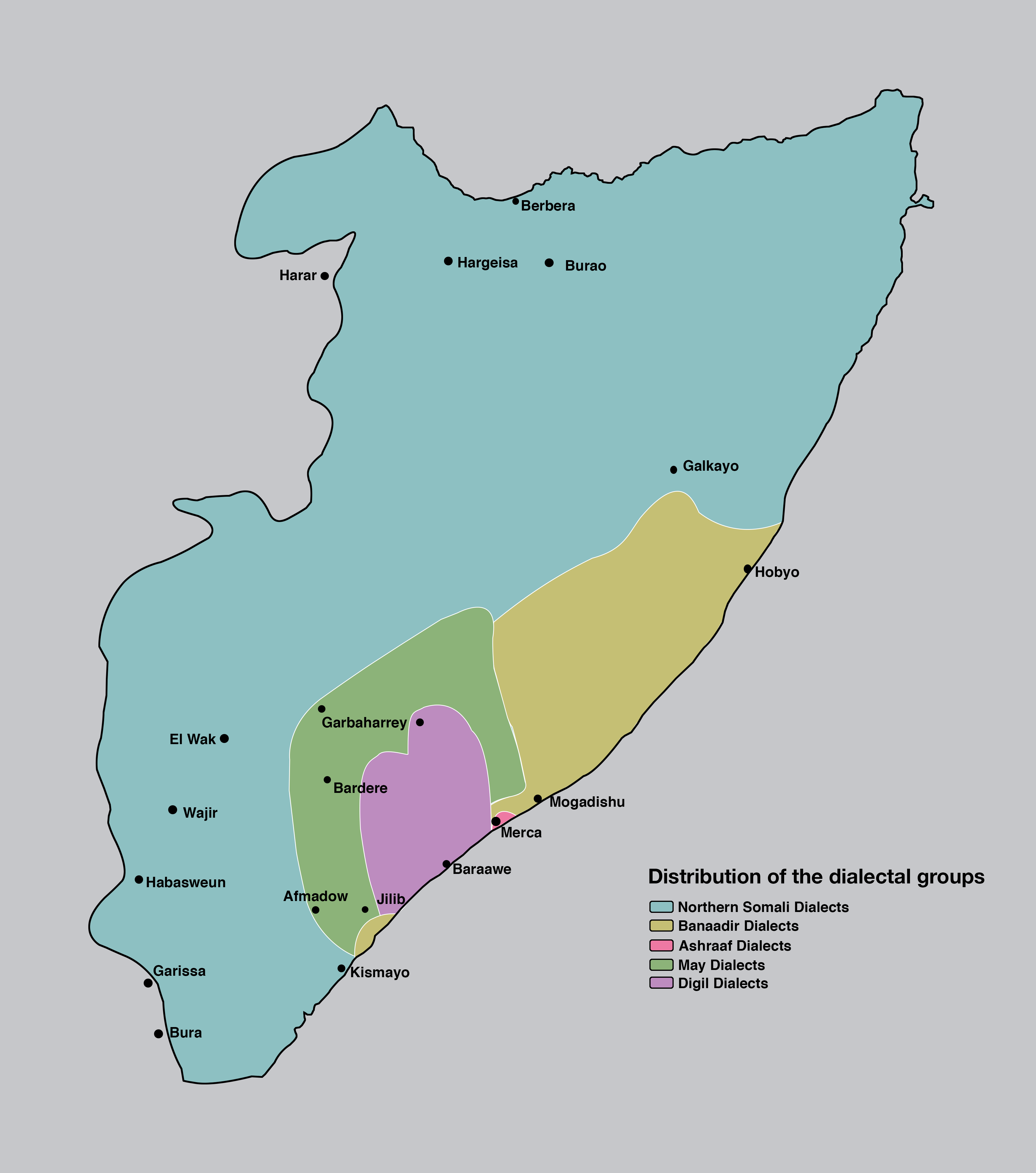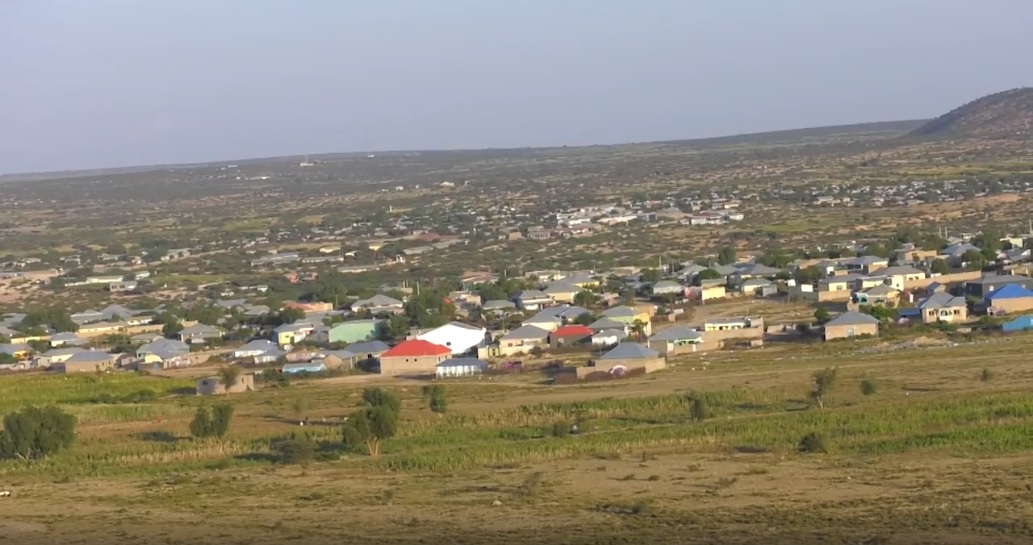|
Aw (father)
Aw (sometimes spelled ''Au'') is an honorific title in the Harari and Somali languages. It is used widely and most commonly in the Somali territories. During his research in the ancient town of Amud, the historian G.W.B. Huntingford noticed that whenever an old site had the prefix ''Aw'' in its name (such as the ruins of Awbare and Awbube), it denoted the final resting place of a local saint. It commonly designates a father, respected elder or saint in Harari and Somali languages.Transactions of the Somali Academy of Sciences and Arts Volume 1 page 164Encyclopedia of Africa south of the Sahara page 47 Most notably applied to the founder of Harar Aw Abadir. The term has been adopted by various Somali clans from Harari language. According to the Somali Geledi clan, the appellation Aw is used amongst them however more devoutly between those of Habasha descent and patricians. Sorcerers among the Arsi Oromo Arsi Oromo is an ethnic Oromo branch, inhabiting the Oromia Region, mainl ... [...More Info...] [...Related Items...] OR: [Wikipedia] [Google] [Baidu] |
Honorific
An honorific is a title that conveys esteem, courtesy, or respect for position or rank when used in addressing or referring to a person. Sometimes, the term "honorific" is used in a more specific sense to refer to an honorary academic title. It is also often conflated with systems of honorific speech in linguistics, which are grammatical or morphological ways of encoding the relative social status of speakers. Honorifics can be used as prefixes or suffixes depending on the appropriate occasion and presentation in accordance with style and customs. Typically, honorifics are used as a style in the grammatical third person, and as a form of address in the second person. Use in the first person, by the honored dignitary, is uncommon or considered very rude and egotistical. Some languages have anti-honorific (''despective'' or ''humilific'') first person forms (expressions such as "your most humble servant" or "this unworthy person") whose effect is to enhance the relative honor a ... [...More Info...] [...Related Items...] OR: [Wikipedia] [Google] [Baidu] |
Harari Language
Harari is an Ethiopian Semitic language spoken by the Harari people of Ethiopia. According to the 2007 Ethiopian census, it is spoken by 25,810 people. Most of its speakers are multilingual in Amharic and/or Eastern Oromo. Harari is closely related to the Eastern Gurage languages, Zay, and Silt'e, all of whom are linked to the now extinct Semitic Harla language. Locals or natives of Harar refer to it as ''Gēy Sinan'' or ''Gēy Ritma'' "language of the City" (''Gēy'' is the word for how Harari speakers refer to Harar, whose name is an exonym). Harari was originally written with a version of the Arabic script, then the Ethiopic script was adopted to write the language. Some Harari speakers in diaspora write their language with the Latin alphabet. Vowels /æ, a, e, ai, ɪ, i/ Grammar Nouns Number Wolf Leslau discusses Harari–East Gurage phonology and grammar: The noun has two numbers, Singular and Plural. The affix -ač changes singulars into plurals: : abōč, a man; ... [...More Info...] [...Related Items...] OR: [Wikipedia] [Google] [Baidu] |
Somali Language
Somali (Latin script: ; Wadaad writing, Wadaad: ; Osmanya: 𐒖𐒍 𐒈𐒝𐒑𐒛𐒐𐒘 ) is an Afroasiatic languages, Afroasiatic language belonging to the Cushitic languages, Cushitic branch. It is spoken as a mother tongue by Somalis in Greater Somalia and the Somali diaspora. Somali is an official language in Somalia and Ethiopia, and a national language in Djibouti as well as in northeastern Kenya. The Somali language is written officially with the Somali Latin alphabet, Latin alphabet although the Arabic alphabet and several Somali scripts like Osmanya script, Osmanya, Kaddare script, Kaddare and the Gadabuursi Somali Script, Borama script are informally used.Lewis, I.M. (1958)The Gadabuursi Somali Script ''Bulletin of the School of Oriental and African Studies'', University of London, Vol. 21, pp. 134–156. Classification Somali is classified within the Cushitic branch of the Afroasiatic family, specifically, Lowland East Cushitic languages, Lowland East Cushitic in ... [...More Info...] [...Related Items...] OR: [Wikipedia] [Google] [Baidu] |
Amud
Amud or Amoud ( so, Camuud, ar, عمود) is an ancient, ruined town in the Awdal region of Somaliland.Damtew Teferra, ''African higher education: an international reference handbook'', (Indiana University Press: 2003) Named after its patron Saint ''Amud'' it was a center of activity during the Golden Age of the Adal Kingdom. The archaeological site is situated above sea level, around 10 km southeast of the regional capital Borama.Huntingford, "The town of Amud, Somalia", ''Azania'', 13 (1978), p. 184 Overview The historian G.W.B. Huntingford (1930) gives a detailed description of the ancient town in ''The town of Amud, Somaliland'': "The house are scattered around without any apparent plan; there are no streets and no trace of a surrounding wall. There is a mosque in the southern half of the dwelling area... ith arather oddly built mihrab facing the entrance... and immediately to the south... is the cemetery. There are upwards of two hundred houses, all well-built of sto ... [...More Info...] [...Related Items...] OR: [Wikipedia] [Google] [Baidu] |
Awbare
Awbare (Amharic: አውበሬ, so, Aw Barre), officially known as Teferi BerTeferi Ber is the name used by the Central Statistical Agency in it''Agricultural Sample Enumeration 2001-2002 (1994 E.C.): Report on Area and Production - Somali Region'' and called after its patron Saint ''Awbare'', is a town in eastern Ethiopia located in the Fafan Zone of the Somali Region, near the border with Somaliland on the main trade route between Jijiga and the sea. It is the administrative center or the capital of Awbare. It was one of the biggest towns of the Adal Empire. According to Ethiopian Christian folklore, this town was the only gateway that has caused fear for the Ethiopian Christian Kingdom, hence the name Teferi Ber, meaning "The Gate of Fear".Magaaladda Aw-Barre , source in Somali (accessed 12 October 2010) The main trade route betw ... [...More Info...] [...Related Items...] OR: [Wikipedia] [Google] [Baidu] |
Awbube
Awbube ( Amharic: አውቡቤ, so, Aw Bube), ( en, Aububah ("Flying Saint"), (also spelt ''Awbuube''), called after its patron Saint ''Awbube'', also known as Alaua or Halaua, is an ancient and ruined town located in the western Fafan Zone in the Somali region of Ethiopia. It is located 34 km northwest of Borama, the capital city of the Awdal Region in Somaliland via Quljeed, then across the border into the Awbare district in Ethiopia. Overview Awbube is an ancient town in the Awbare district. It was a center of activity during the Golden Age of the Adal Sultanate. Called after its patron Somali Saint and Hero Awbube, known as the "Flying Saint", who was instrumental in the spread of the Islamic faith into the Abyssinian hinterlands, a hero of many early battles which some accounts mention was against the Abyssinian Empire and earlier inhabitants of the region. He was mentioned by name in ''Futuh al Habasha'' where the armies would visit his tomb and seek blessings through him ... [...More Info...] [...Related Items...] OR: [Wikipedia] [Google] [Baidu] |
Wali
A wali (''wali'' ar, وَلِيّ, '; plural , '), the Arabic word which has been variously translated "master", "authority", "custodian", "protector", is most commonly used by Muslims to indicate an Islamic saint, otherwise referred to by the more literal "friend of God in Islam, God".John Renard, ''Friends of God: Islamic Images of Piety, Commitment, and Servanthood'' (Berkeley: University of California Press, 2008); John Renard, ''Tales of God Friends: Islamic Hagiography in Translation'' (Berkeley: University of California Press, 2009), passim. When the Arabic definite article () is added, it refers to one of the names of God in Islam, Allah – (), meaning "the Helper, Friend". In the traditional Islamic understanding of saints, the saint is portrayed as someone "marked by [special] divine favor ... [and] holiness", and who is specifically "chosen by God and endowed with exceptional gifts, such as the ability to work Miracle worker, miracles".Radtke, B., "Saint", in: ' ... [...More Info...] [...Related Items...] OR: [Wikipedia] [Google] [Baidu] |
Somalis
The Somalis ( so, Soomaalida 𐒈𐒝𐒑𐒛𐒐𐒘𐒆𐒖, ar, صوماليون) are an ethnic group native to the Horn of Africa who share a common ancestry, culture and history. The Lowland East Cushitic Somali language is the shared mother tongue of ethnic Somalis, which is part of the Cushitic branch of the Afroasiatic language family, and are predominantly Sunni Muslim.Mohamed Diriye Abdullahi, ''Culture and Customs of Somalia'', (Greenwood Press: 2001), p.1 They form one of the largest ethnic groups on the African continent, and cover one of the most expansive landmasses by a single ethnic group in Africa. According to most scholars, the ancient Land of Punt and its native inhabitants formed part of the ethnogenesis of the Somali people. An ancient historical kingdom where a great portion of their cultural traditions and ancestry has been said to derive from.Egypt: 3000 Years of Civilization Brought to Life By Christine El MahdyAncient perspectives on Egypt By R ... [...More Info...] [...Related Items...] OR: [Wikipedia] [Google] [Baidu] |
Geledi
The Geledi are a Somali clan that live predominantly in the environs of Afgooye city. They are a sub-clan of the Rahanweyn and led the Geledi sultanate during the late 17th to early 20th century. They are divided into two main lineage groups: the Tolweyne and the Yabadhaale. History Origins The nobles within the Geledi claim descent from Omar al-Din ( Abadir) who arrived from Harar. He had 3 other brothers, Fakhr and with 2 others of whom their names are given differently as Shams, Umudi, Alahi and Ahmed. Together they were known as ''Afarta Timid'' , 'the 4 who came', indicating their origins from Arabia. However the Geledi people like the other Rahanweyn are of true Somali stock and like the Darod and Isaaq claiming Arab lineage was a phenomenon. Aw Kalafow a descendant of Omar is stated to be the first to use the title ''Garad''. Ajuran Sultanate The Geledi and their Wacdaan allies were under the rule of the Ajuran client Silcis. The grandfather of Ibrahim Adeer was an ... [...More Info...] [...Related Items...] OR: [Wikipedia] [Google] [Baidu] |
Habesha Peoples
am, ሐበሻ, አበሻ, translit=Häbäša, 'äbäša ti, ሓበሻ, translit=Ḥabäša , regions = , languages = Ethiopian Semitic languages , religions = Predominantly Oriental Orthodox Christianity (Orthodox Tewahedo churches); also Islam, Protestant Christianity (P'ent'ay) and Judaism ( Beta Israel) Habesha peoples ( gez, ሐበሠተ, translit=Ḥäbäśät or Ḥabäśät ; am, ሐበሻ, አበሻ, translit=Häbäša, 'äbäša; ti, ሓበሻ, translit=Ḥabäša; etymologically related to English "Abyssinia" and "Abyssinians" by way of Latin) is an ethnic or pan-ethnic identifier that has been historically employed to refer to Semitic language-speaking and predominantly Orthodox Christian peoples found in the highlands of Ethiopia and Eritrea between Asmara and Addis Ababa (i.e. the modern-day Amhara, Tigrayan, Tigrinya peoples) and this usage remains common today. The term is also used in varying degrees of inclusion and exclusion ... [...More Info...] [...Related Items...] OR: [Wikipedia] [Google] [Baidu] |
Arsi Oromo
Arsi Oromo is an ethnic Oromo branch, inhabiting the Oromia Region, mainly in the Arsi, West Arsi and Bale Zones of Ethiopia, as well as in the Adami Tullu and Jido Kombolcha woreda of East Shewa Zone. They claim to have descended from Sikkoo-Mandoo of Barento Oromo. The Arsi in all zones speaks Oromo share the same culture, traditions and identity with other subgroup Oromo. Culture The Arsi have developed a concept of ''Arsooma'' which roughly translates to Arsihood. This has provided Arsi with an identity that has been passing to clans and other groupings for a long period of time. The Arsi have a complex concept of clan division. The two main branches are Mandoo and Sikko. Mandoo refers to the Arsis in the Arsi and northern Bale Zones, while Sikko refers to those mainly in the Bale Zone. History Arsi Oromo state an intermarriage took place between their ancestors and previous inhabitants of the Arsi Province, Adere ( Harari) whom they call the Hadiya. Hadiya clans clai ... [...More Info...] [...Related Items...] OR: [Wikipedia] [Google] [Baidu] |




